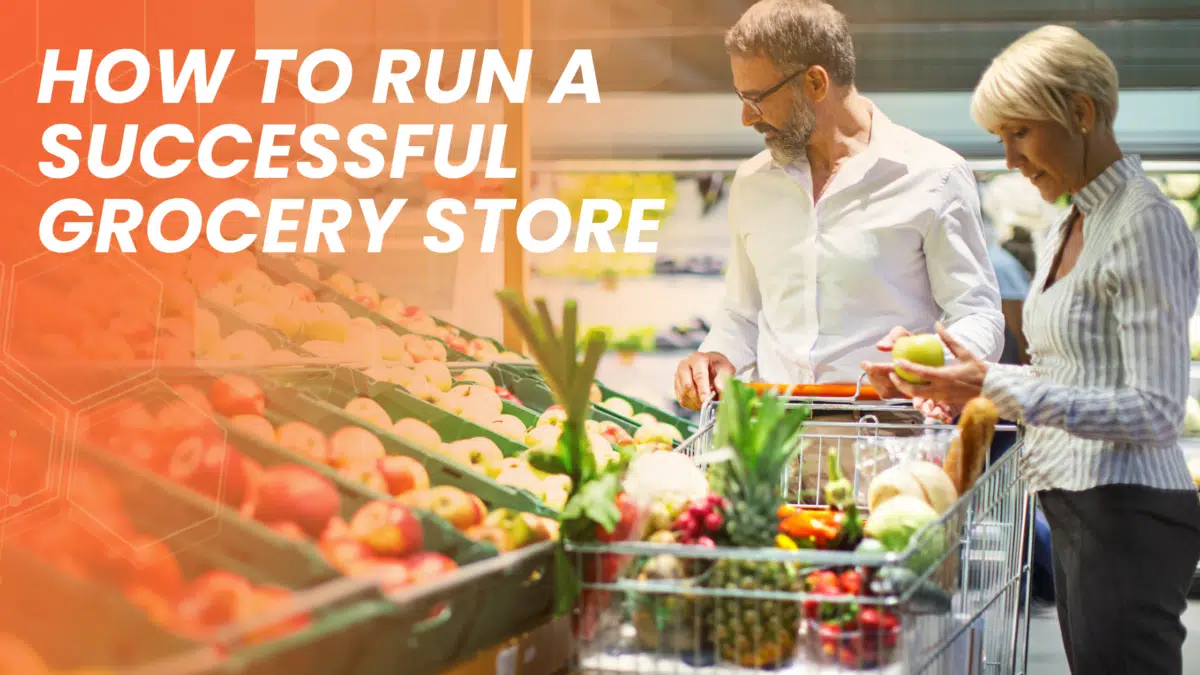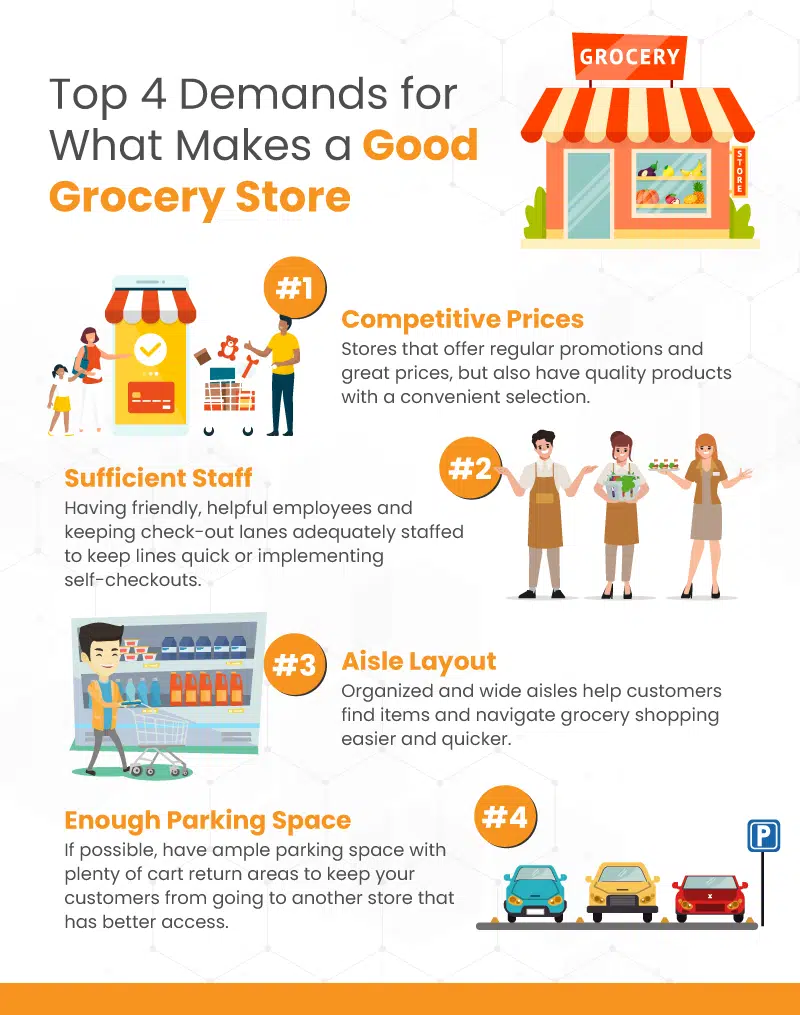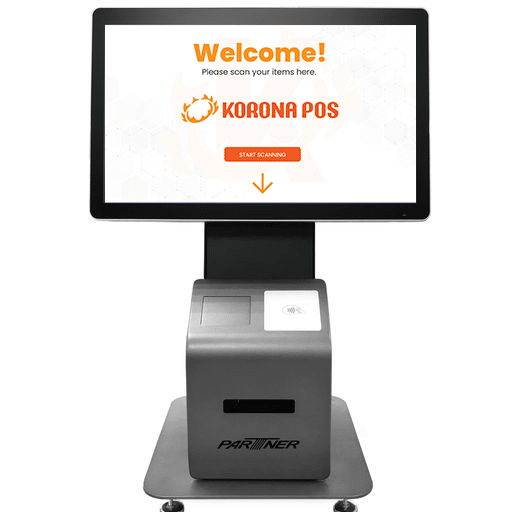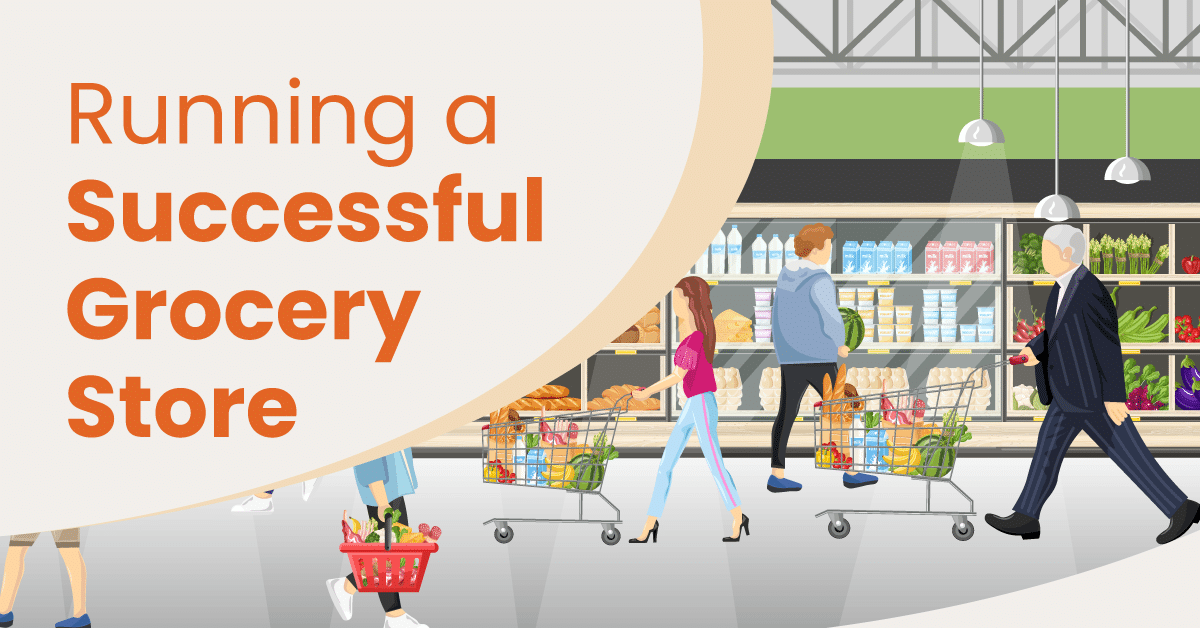
Running a retail store has never been a cakewalk. And running a grocery store even less so. Owners and managers must deal with a perishable inventory, complicated day-to-day supply challenges, difficult and demanding customers, a younger and relatively inexperienced staff, daunting overhead costs, and so much more.
But what makes a good grocery store? How do you promote and attract customers to grocery stores? And above all, what strategies do you implement to make your grocery store more profitable? Check out this article to learn more about how to run a successful grocery store.
What Does It Take To Run a Grocery Store?
Managing a successful grocery store involves many factors. Supervision of daily operations, hiring and training employees, and monitoring and managing inventory regularly are just some of the tasks that a grocery store manager must perform.
As a grocery store manager, you will also be responsible for maintaining good relationships with customers and suppliers. You will also be required to fill in for other positions if there are staff shortages during shifts. Running a grocery store also means understanding the products, prices, and customers who visit your store.
You will also be responsible for managing finances and marketing. Thus, an even more critical aspect of managing a grocery store is your ability to juggle multiple priorities quickly, efficiently, and calmly.
How would you react if the local health inspector stopped by your store due to a customer complaint while one of your employees had severely wounded himself and needed medical attention? How would you prioritize these problems? Your ability to manage your stress and your staff will also determine the consumers’ perception of your store.
Strategies To Make Your Grocery Store More Profitable
Compared to other companies, profit margins on groceries are much lower. This is because grocery items are commodities. If a consumer doesn’t like the price of an item in one store, they can simply go to another. Grocery stores are everywhere, so finding an item at a reasonable price is not difficult. However, here are some ways to increase your convenience store’s profits:
Cross merchandising
Cross merchandising combines items that naturally go together, such as a pasta sauce display, pasta boxes, a bottle of wine, olive oil, or balsamic vinegar. Profitability is improved when you have one low-margin item but combine it with one or two much higher-margin items. Assuming most customers buy all the items you have combined, you will get a mixed margin from all the items combined. If you do it right, you can often get a much higher margin than if you only had one of the items on your display.
Position your least expensive items at the ends of the displays and aisles
Having a produce aisle that starts with conventional (non-organic) onions or bananas will naturally give the impression that prices are low throughout the aisle. On the other hand, if you have an aisle that starts with the most expensive item on the shelf, it will subconsciously imply that every price is expensive. Therefore, it is recommended that you start by displaying relatively low-priced products and then allow customers to discover the full range of your products as they move deeper into the store.
Keeping an eye on your shrink
Retail shrink refers to products purchased that cannot be sold. They’re also called dead stocks. These items include stolen items, expired packages, merchandise damaged by your employees, items that arrive damaged (and cannot be credited to the seller), fresh produce, deli meats, meat, or seafood that are past their sell-by date or spoiled. Your shrink can quickly get out of control if you’re not careful. A good rule of thumb for grocery stores is about a 3% shrinkage of total store sales. Perishable items such as produce, dairy, meat, seafood, and deli products have the highest losses. So make sure you have good shrink tracking systems in place.
Keep your purchases small, so you don’t overdo it
It is common for grocery stores to have enough products in the back room to be used as a backup. When you have too many products in the back room, it will cost you money. Every time you touch a product, you lose money. When you have products in the back room, you have already paid an employee to take them out of a truck, stock the shelves, and then take them to the back room. Then you have to pay them again to restock the shelves later. So it’s much more efficient to go from truck to shelf. If you have sporadic or infrequent deliveries, you may need to stock up, but just order enough product so you don’t run out before the next delivery. Also, having a surplus of product on hand increases your shrinkage, also known as spoilage. And it doesn’t just stem from expired or stolen products; damaged products add up too. The more you move products around, the more likely they will be damaged. So just remember to have the minimum amount of product on hand that you need to avoid running out of product, but also to avoid overstocking.

What Makes a Good Grocery Store?
Running a successful grocery store is also about putting yourself in the shoes of an everyday consumer and seeing what might draw a shopper into a grocery store. Better yet, think about what drives you away from a grocery store, too. Customers are very loyal to stores and will walk past some of them to get to “their” store. Sometimes they will even drive past another store of the same chain.
1. Competitive prices
Good grocery stores are competitively priced and offer regular promotions. However, customers are not only looking for low prices. They are also looking for friendly staff, quality products, and a predictable and convenient inventory selection.
This explains why companies like Whole Foods Market have dominated the market despite not being the cheapest store in town. If your prices are low, but your staff is not friendly or navigating the store is difficult, customers will not be thrilled with their shopping experience. On the other hand, if your prices are a little higher, but you offer amazing products and your staff is friendly, customers will likely return regularly.
2. Sufficient staff at the checkout counter

Having multiple staff, self-checkout lines, and Scan and Go apps can make the customer experience in a grocery store more pleasant. It’s a great way to keep the customer from waiting in long lines. Thus, self-checkout POS can help reduce the length of the lines, thus improving the checkout process. Customers who only have a few items can quickly check out and go on to other things.
Still, there may be times when you are short-staffed and have long lines. It’s important to minimize these. Implement mobile checkouts for customers who only have a few items; add impulse items to the checkout area to distract those waiting; get a reliable and speedy POS system and credit card machine; train your cashiers well, and train staff based on past sales data. In the end, long lines will lose your business, so do everything you can to keep them manageable.
3. Aisle layout
Another common feature of the best grocery stores is the layout of the aisles. Grocery stores generally have wide, pleasant aisles that offer many options. This makes shopping easy. You will find these basic aisles even if you walk into a completely new store. Popular aisles that keep a grocery store organized and easy to navigate typically include the following:
- Baking
- Beverages
- Bread
- Breakfast Cereal
- Candy and snacks
- Canned Goods
- Condiment
- Dairy
- Dry goods
- Paper products and cleaning supplies
- Personal care
Enough space for parking
A good grocery store must have decent parking, even when the store is busy. Parking lots should be safe, have plenty of cart spaces, and (perhaps most importantly) ample parking. Americans are increasingly driving large cars, so tiny parking lots that are hard to get into or make your doors ring every time will send people to your competitors in droves when all else is equal.
How To Promote And Attract Customers To Grocery Stores?
There are several strategies you can use to boost sales and retain customers in your grocery store. Try methods that have already proven their effectiveness:
Launch referral and loyalty programs
Referral and loyalty programs can attract new customers and retain old ones. If customers know they have incentives at your store, they’ll keep coming back. Loyalty programs can come in a variety of shapes and sizes. Be sure to offer valuable incentives but not ones that break your bottom line. Get creative and stand out from your competition.
However, make sure you are providing a positive shopping experience. No matter how great your loyalty program is, customers may not return or recommend your store to others if they don’t have a positive experience at your store. It’s essential to check your product labels and expiration dates frequently. Incorrect messages and expired products on your shelves can quickly damage your reputation as a reliable grocer.
Invite customers to tastings
Choose several products from the same group and ask customers to choose the best one. This solves two problems: creating an assortment and attracting customers. To promote a grocery store, select several products that are new to the town: for instance, an interesting variety of cheese, cookies from a small bakery, locally-sourced wine, etc. Announce the tasting one week in advance. There are two conditions for success – the product is new, and the customer gets to try it for free.
Promotions and discounts
Unlike what many managers may think, promotions and regular discounts will not break the bank. Even if you reduce prices significantly, demand will increase. In addition, sales allow you to get rid of excess merchandise in time. If you reduce the price of products whose shelf life is about to expire in 3 or 4 months, you won’t have to throw them away.
Offer food delivery
You’ll attract more shoppers by offering more convenience. Think about how you can offer delivery or allow for ordering through an app or website. To attract an older crowd, offer them this service at a competitive price. You don’t spend a lot of time bringing food to someone down the block, but you’ll increase your brand and attract different customers.
Add your store information on Google Maps
Another way to promote the grocery store is to add the business to Google Maps. Many customers search for store information on the internet using a PC or mobile device. It’s important to take advantage of this, especially since the service is free. All you have to do is fill in a few fields in the directory. Once the information is moderated, it will be available in a search, which will direct your customers to your store.
Use a large shopping cart
Entrepreneurs who have built a successful retail business have long noticed that sales increase with the average check if customers are offered a larger shopping basket. Plus, you can add small shopping carts for children. The idea behind this strategy is simple: first, children don’t distract parents, so they don’t rush, and second, they make purchases that weren’t in the adults’ plans.
How To Run a Successful Grocery Store: Wrapping Up
Just like any other type of retail business, the success of a grocery store depends primarily on its location. Running and/or building a grocery store can be very lucrative but requires a lot of work. Launching referral and loyalty programs and inviting customers to tastings, promotions, and discounts are all strategies you can implement to attract more customers to your grocery store.
FAQs: How to Run a Successful Grocery Store
Running a grocery store requires a variety of skills. As a grocery store manager, you’ll have to be a jack of all trades. Finding and stocking high-demand products, hiring skilled department employees, and keeping track of inventory are just a few. Although running such a business is complex, owning a grocery store can be very lucrative.
Starting a small family grocery store can cost anywhere from $25,000 to $50,000. There are other costs you need to consider as well. These include supplies, inventory, permits, licenses and bonds, rent, related renovations, and other ongoing expenses.
Here are some of the best-margined items you should keep an eye on when running a grocery store: deli meats and cheeses, batteries, prepared foods, non-food items, brand name over-the-counter medications, cosmetics and beauty products, butchered meats, and cereals.
Regardless of the size of your grocery store, your starting team will likely need to be at least five people. Grocery stores are hard to run. You’ll need constant support to manage sales, replenish inventory, assist customers and ensure safety.












